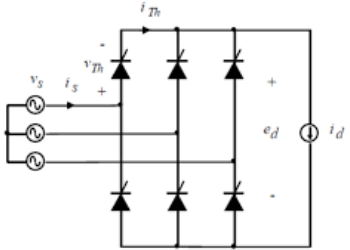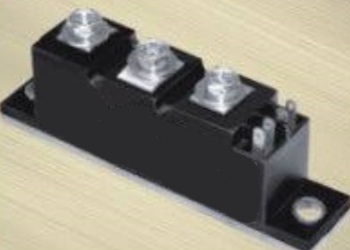Thyristor Phase Control Calculation: the source of wisdom in power electronics
In power electronics, the thyristor is a crucial semiconductor device widely used in rectifiers, inverters, choppers and other circuits. By precisely controlling the turn-on and turn-off of thyristors, we can achieve phase control of alternating current and further optimize the power conversion process. This article will introduce a practical thyristor phase control calculation method to help readers better understand and apply this critical technology.

(thyristor phase control)
Principle of thyristor phase control calculation
Thyristor phase control calculation controls the turn-on and turn-off times of thyristors . The principle is to control the rectification process of alternating current by adjusting the phase of the thyristor trigger pulse, thereby achieving precise control of the power system.
A thyristor is a semi-controlled device whose turn-on and turn-off times are controlled by trigger pulses. By adjusting the phase of the trigger pulse, the turn-on and turn-off time of the thyristor can be controlled, thereby realizing the rectification of alternating current. In phase control, the trigger pulse is usually associated with the AC power supply's phase information, and the trigger pulse's phase and width are calculated through a specific algorithm to achieve precise power control.
Typical thyristor phase control algorithms include PWM (pulse width modulation) control and phase shift control. PWM control controls the output voltage by adjusting the pulse width and has the advantages of fast response and high accuracy. Phase-shift control regulates the output voltage by changing the phase of the trigger pulse, which is suitable for some specific scenarios.
Thyristor phase control calculation method
The following introduces a commonly used thyristor phase control calculation method:
1. Determine the phase angle θ required to be controlled. Generally speaking, θ is between 0° and 180°.
2. Calculate the moment of the trigger pulse based on the power frequency and the phase angle θ required to be controlled. In the case of a sine wave power supply, the moment of triggering the pulse can be calculated by the following formula:
Trigger pulse time = (N × power cycle) + (θ × π / 180)
Among them, N is an integer, indicating the position of the trigger pulse in a power cycle; θ is the phase angle required to be controlled.
3. Generate the corresponding trigger pulse signal based on the calculated trigger pulse moment. A timer or microprocessor can be used to implement this step in practical applications.
4. Input the generated trigger pulse signal to the thyristor's gate to trigger the thyristor's conduction.

(thyristor phase control)
Application examples of thyristor phase control calculation
Let's say we have a 50Hz sine wave power supply and want to control its phase at 60°. According to the above calculation system, we can conclude that the moment of the trigger pulse is:
Trigger pulse time = (N × 0.02) + (60 × π / 180)
= (0 × 0.02) + (0.36)
= 0.36 seconds
In practical applications, we can use a timer to generate a trigger pulse signal and input it to the gate of the thyristor. By adjusting the timer's count value, the thyristor's conduction angle can be controlled, thereby changing the phase of the alternating current.
Supplier
PDDN Photoelectron Technology Co., Ltd. is a high-tech enterprise focusing on the manufacturing, R&D and sales of power semiconductor devices. Since its establishment, the company has been committed to providing high-quality, high-performance semiconductor products to customers worldwide to meet the needs of the evolving power electronics industry.
It accepts payment via Credit Card, T/T, West Union, and Paypal. PDDN will ship the goods to customers overseas through FedEx, DHL, by sea, or by air. If you are looking for high-quality PHASE CONTROL THYRISTORS, please feel free to send us inquiries and we will be here to help you.
